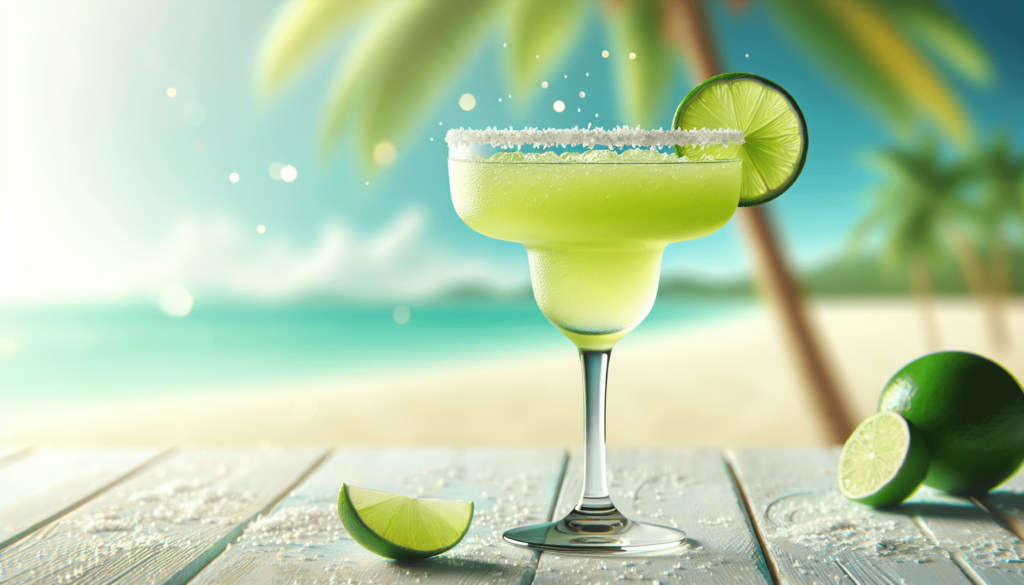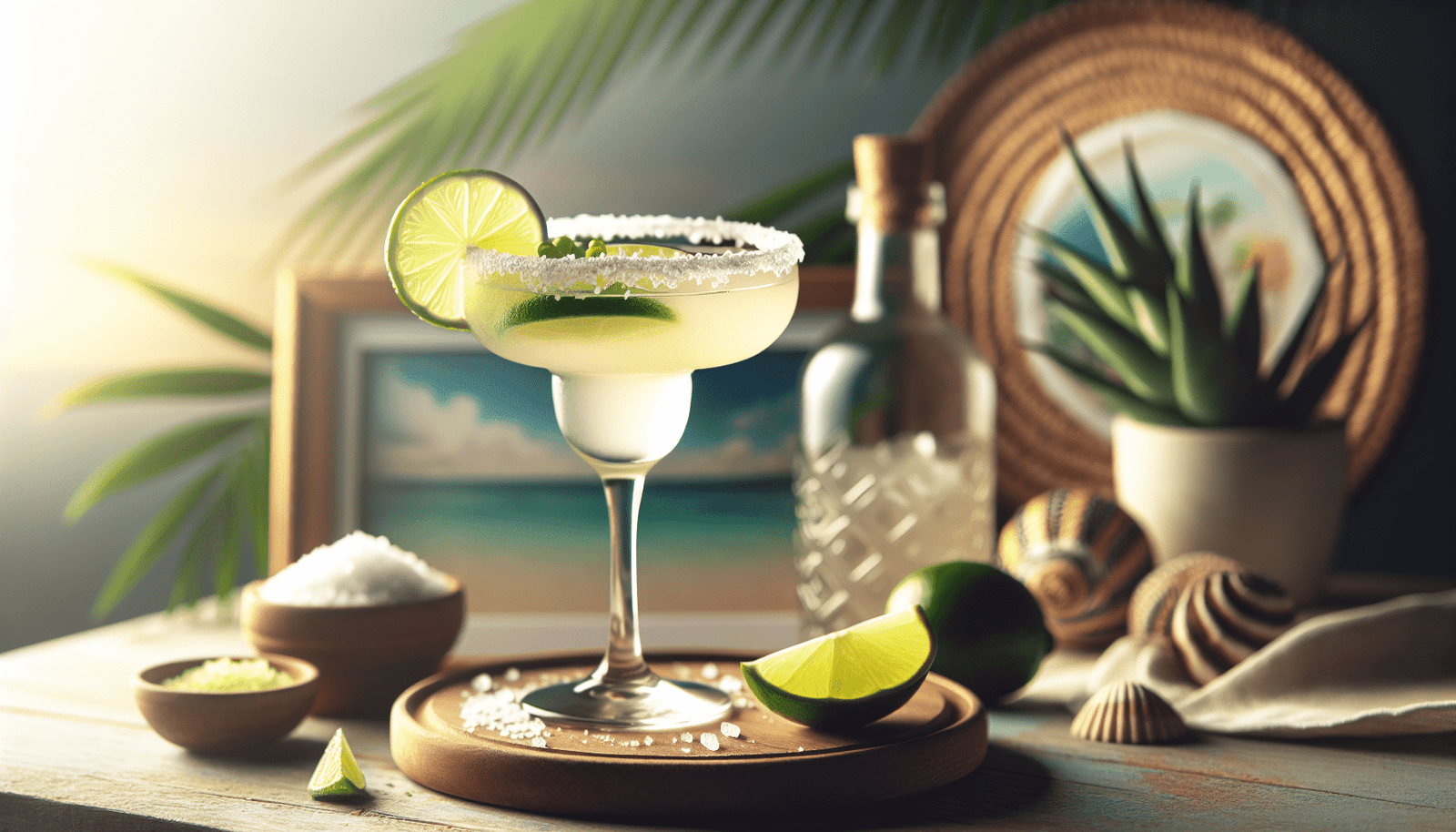Have you ever wondered why the Margarita cocktail holds a charming allure for so many? This cocktail, with its perfectly balanced blend of sweet, sour, salty, and bitter notes, is a favorite in many social gatherings and has a fascinating history and variety that keeps enthusiasts intrigued. Let’s embark on a journey to understand this classic drink and master the craft of making the ideal Margarita, giving you all the details you need to impress your friends at the next get-together.

The History of the Margarita
Before you pour the first drink, understanding the history of this classic cocktail adds a rich layer to its preparation. The Margarita’s origin story is as colorful as the drink itself, with multiple tales vying for authenticity. One popular legend suggests that it was invented in the late 1930s or early 1940s by bartender Carlos “Danny” Herrera at his Tijuana-area restaurant. He reportedly created it for a dancer named Marjorie King, who was allergic to most spirits but tequila.
Another tale credits the invention to socialite Margarita Sames, who purportedly mixed the first Margarita at her Acapulco party in 1948. There’s also the theory that the Margarita is a Mexican variation of an American cocktail known as the “Daisy” (Margarita in Spanish), where tequila was simply substituted for brandy. Each version brings its own charm to the story, but they all agree on one thing–the Margarita is an enduring symbol of celebration and leisure.
Ingredients of a Margarita
To craft the quintessential Margarita, you need to start with quality ingredients. Here, you’ll discover the essentials that make this cocktail stand out:
Tequila
Your choice of tequila is crucial since it’s the base of your Margarita. A good rule of thumb is to select a tequila that’s 100% blue agave, as this ensures a pure and natural taste. Blanco tequila is often preferred due to its clean and bright flavor, but reposado tequila can add more depth with its subtle oak notes.
Cointreau or Triple Sec
This orange-flavored liqueur adds a sweet and citrusy component to the Margarita. Cointreau is a popular choice because its flavor is more refined and less sugary than some triple-secs. It enhances the drink without overpowering its other elements.
Fresh Lime Juice
Nothing compares to the zesty zing of fresh lime juice. It introduces the essential tartness that balances the sweet and salty elements of the drink. Bottled lime juice often lacks the same brightness and can throw off the delicate equilibrium.
Simple Syrup or Agave Nectar (Optional)
While not always used, a dash of simple syrup or agave nectar can soften the drink’s acidity without dulling its other components. It’s typically reserved for those who prefer a slightly sweeter Margarita, or to balance particularly tart limes.
Salt for Rimming
The salted rim is not just for aesthetics—it provides a bit of saline contrast that enhances the cocktail’s flavors. You can customize this by integrating different types of salt or even adding a bit of spice for an extra kick.
Basic Margarita Recipe
With quality ingredients in hand, you’re ready to learn the basic Margarita recipe favored by cocktail enthusiasts worldwide. The classic Margarita is as much about balance and personal preference as it is about precision.
Ingredients:
- 2 oz Tequila
- 1 oz Cointreau or triple sec
- 1 oz Fresh lime juice
- Optional: ½ oz simple syrup or agave nectar
- Salt for rimming
- Lime wedge for garnish
Steps:
- Rim the Glass: Run a lime wedge around the rim of a glass and dip it into a plate of coarse salt. Set aside.
- Combine Ingredients: In a shaker, combine tequila, Cointreau, lime juice, and, if desired, simple syrup or agave nectar.
- Shake Well: Fill the shaker with ice and shake vigorously for about 15-20 seconds until the mixture is well-chilled.
- Strain and Serve: Strain the mixture into the prepared glass over fresh ice.
- Garnish: Add a lime wedge for garnish. Enjoy!
Variations on the Classic Margarita
The Margarita is a versatile cocktail meant to be enjoyed in a variety of ways, and there are several popular variations that you might find intriguing. Here’s how to add some creativity to your Margarita-making:
Frozen Margarita
The frozen Margarita turns this classic drink into a refreshing slushy, perfect for a hot summer day.
Steps: Blend the classic ingredients with a cup of ice until smooth, then pour into a salt-rimmed glass.
Fruit Margarita
Infuse your cocktail with fresh fruits like strawberries, mangoes, or watermelon for a flavor twist.
Steps: Muddle the desired fruit at the bottom of a shaker before adding the classic Margarita ingredients. Optionally, blend with ice for a refreshing frozen version.
Spicy Margarita
For those who enjoy a bit of spice, a spicy Margarita adds a fiery twist with jalapeño or other chili peppers.
Steps: Muddle slices of jalapeño in a shaker with the other ingredients, or infuse your tequila with peppers for a more pronounced heat.
Mezcal Margarita
Mezcal offers a smoky profile that sets it apart from traditional tequila, creating a bold and complex Margarita.
Steps: Simply substitute mezcal for the tequila in the classic recipe.

Perfecting the Margarita at Home
Perfection in home cocktails involves understanding each element and adjusting to your taste preferences. It’s the little tweaks and personal touches that can elevate your Margarita from good to great. Here’s how you achieve that:
Balancing Flavors
Your ideal Margarita should have a harmonious blend of all its components. Taste and adjust as you prepare. Add more lime juice for tartness, more Cointreau if it lacks sweetness, or extra tequila if it needs more punch.
The Importance of Fresh Ingredients
Whenever possible, opt for fresh. Always use freshly squeezed lime juice over bottled alternatives for its brightness. Also, consider fresh herbs or spices if you’re experimenting with flavor profiles.
Experiment with Garnishes
Garnishes are more than decorative—they enhance the drink’s aroma and can even impact taste. While the traditional lime wedge is classic, consider options like mint, edible flowers, or chili pepper rings to complement your unique variations.
Choosing Glassware
The choice of glassware—typically a wide-rimmed glass—can affect your experience. A salt-rimmed margarita or coupe glass facilitates proper tasting and aroma.
Troubleshooting Common Margarita Mistakes
Whether you’re new to mixology or a seasoned amateur, mistakes occur. Here are some common pitfalls and how you can avoid them:
Too Tart or Too Sweet?
If your Margarita is too sour, you’ve likely added too much lime juice. Cut back next time or balance with a bit more simple syrup. Conversely, if it’s overly sweet, reduce the Cointreau or triple sec, or add more lime juice.
Watery Consistency
A watery Margarita might stem from not shaking long enough. Aim for a powerful 15-20 second shake and strain immediately to preserve the ice-cold temperature without melting the ice excessively.
Bland Flavor
Make sure to use 100% blue agave tequila to prevent muted flavors. If you use low-quality tequila, the distinct agave flavor will be diluted. The same applies to the choice of a lower-quality triple sec—opt for Cointreau for a fuller profile.
Responsible Enjoyment
Understanding the drinking culture that surrounds the Margarita can enhance your enjoyment. Indulging in this cocktail means appreciating the craftsmanship, flavor, and tradition behind it. Remember to enjoy responsibly and savor the nuances that each sip offers.
As you now know, making the perfect Margarita is both an art and a science. Each ingredient plays a crucial role in the symphony of flavors. Whether you are savoring it at a festive gathering or enjoying the solitude of an evening alone, the Margarita remains a timeless companion. Now, with recipes and ideas at hand, you can indulge in this classic cocktail’s rich experience and share the joy with others.
Some of the links on this site are affiliate links, which means I may earn a small commission if you click on them and make a purchase, at no additional cost to you. As an Amazon Associate, I earn from qualifying purchases.



